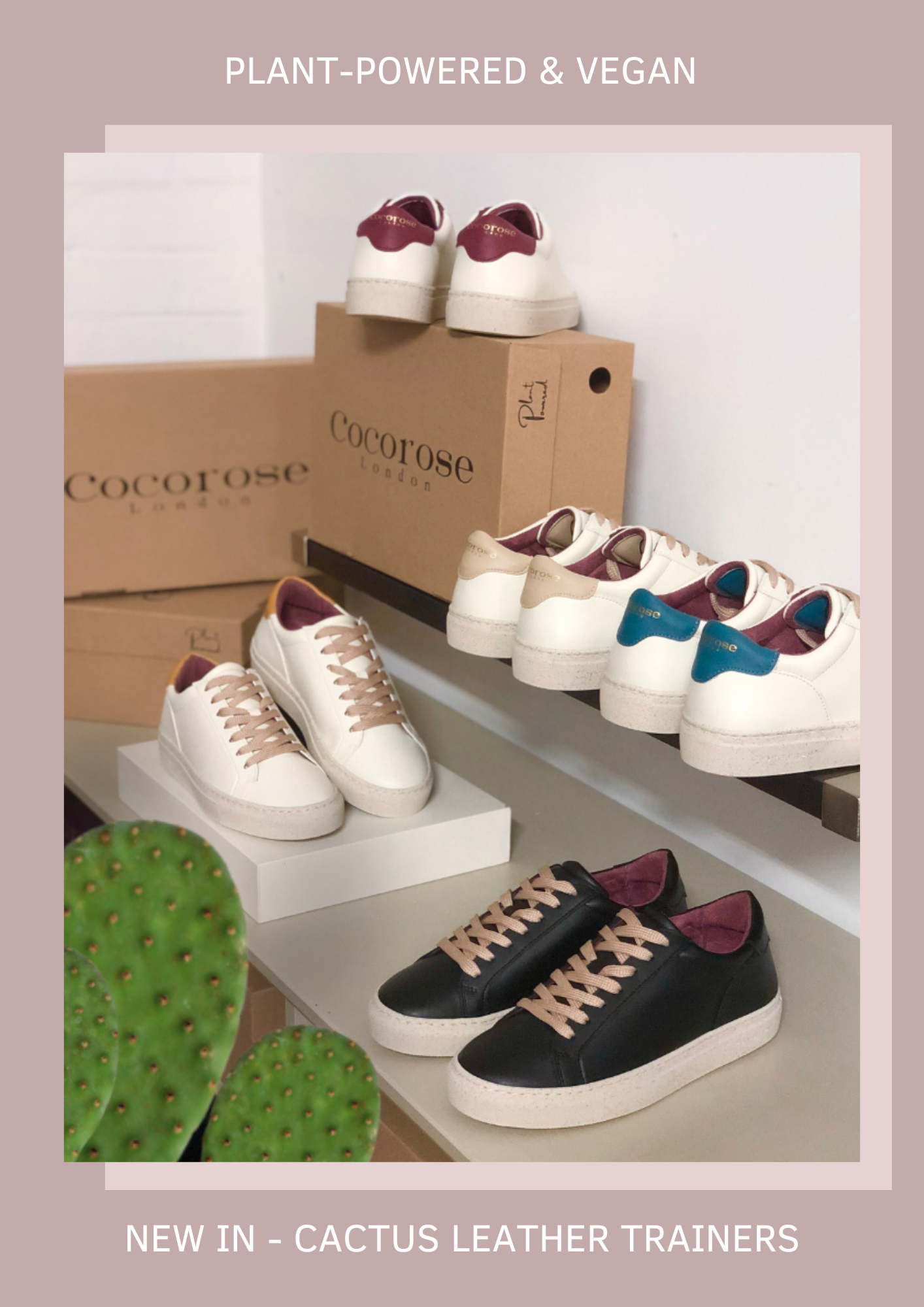Article: Caring for Vegan Plant-Based Trainers: A Guide to Cactus Leather Maintenance

Caring for Vegan Plant-Based Trainers: A Guide to Cactus Leather Maintenance

Hello Cocorosers 💗
As conscious consumers increasingly seek sustainable alternatives in every aspect of their lives, there has been interesting development and innovation in the plant-based material space as an ethical and environmentally friendly choice. Among the innovative materials developed, cactus leather stands out for its unique qualities. However, like any material, cactus leather requires diligent care to maintain its softness, suppleness and flexibility. We very recently launched our pioneering collection of cactus leather vegan trainers, utilising this new material as a ground-breaking alternative to both animal and synthetic leather. In this guide, we'll explore the essential steps to ensure your vegan plant-based trainers, particularly those made from cactus leather, remain in optimal condition.

Understanding Cactus Leather
Cactus leather, derived from the nopal cactus, shares intriguing similarities with human skin. Just as our skin requires regular care to stay healthy, cactus leather also needs regular TLC, especially in adverse conditions such as cold, dry weather. Neglecting proper maintenance can lead to cracking, compromising both the aesthetic appeal and longevity of your plant-based trainers.
Regular Moisturising for Cactus Leather
The key to preserving the integrity of cactus leather lies in consistent moisturising, particularly around the higher stress point areas on the shoes (where the foot flexes and where there tends to be more pressure on the leather from the constant flexing). Much like our skin benefits from applying a lotion or cream to help prevent cracking and our lips to prevent chapping, cactus leather requires similar treatment. During colder temperatures when the air tends to be drier, it's crucial to take extra precautions.

Moisturising regularly forms a protective layer on the cactus leather, safeguarding it against environmental stressors and helping to prevent the onset of cracks.
Throughout our extensive research, development and testing of cactus leather shoes over the past year, we found that everyday moisturisers, such as our range of Hand & Body Lotions or any moisturisers you may already have in your beauty routine (Cetraben, Cerave or any moisturising lotions), work effectively on cactus leather. In fact, we tested the absorption levels of everyday lotions versus those of specialised shoe polishes and we found that the latter didn't actually absorb fully into the leather, meaning that the cactus leather didn't benefit from increased elasticity, softness and flexibility.
Shoe polishes tend to be more waxy so they don't necessarily absorb into the leather. Ideally we want the moisturising lotion to absorb fully into the cactus leather, in order for the leather to retain its soft and pliable qualities. We would also recommend products with natural ingredients and avoid those containing harsh chemicals that could potentially harm the material.


The Application Process
Because we know that life can sometimes get busy for our Cocorosers, we moisturise all of our Kew cactus leather trainers prior to dispatch. Therefore on receiving your new trainers, you can rest assured that your pair will have already had its first moisturisation. However, we would recommend that you moisturise again, prior to your first wear.

To effectively moisturise your cactus leather trainers, you can easily follow these steps:
-
Clean the Surface: Before applying any moisturiser, gently clean the surface of your trainers to remove any dirt, dust and debris. A soft, damp cloth can be used for this purpose. Of course, if you have just received your new pair, this step will not be required as your trainers will be brand new!
-
Test in an Inconspicuous Area: Always test the moisturiser on a small, inconspicuous area of the trainers to ensure compatibility and avoid any unwanted reactions.
-
Apply the Moisturiser: Using your fingers or a clean, soft cloth, apply a small amount of moisturiser to the cactus leather. Ensure an even application across the surface, paying special attention to areas that will have a higher flex / stress / pressure points such as on the toe area and on the sides where trainers tend to crease from wear.
-
Allow for Absorption: Keep rubbing in and let the moisturiser absorb into the cactus leather. This allows the material to benefit fully from the nourishing properties of the moisturiser.
- Repeat Regularly: Consistent application is key to ensure your trainers will remain in tip top condition.

Caring for vegan plant-based trainers made from cactus leather is not only a responsibility but a rewarding practice that extends the life and aesthetics of your footwear. By incorporating a regular moisturising routine using readily available skin care products, you will contribute to the longevity and sustainability of your plant-based trainers. Embrace this conscientious approach to shoe care, and your cactus leather trainers will continue to make a positive impact on both your style and the planet.
Janan & Team Cocorose xx



Please leave a comment if you wish
This site is protected by hCaptcha and the hCaptcha Privacy Policy and Terms of Service apply.